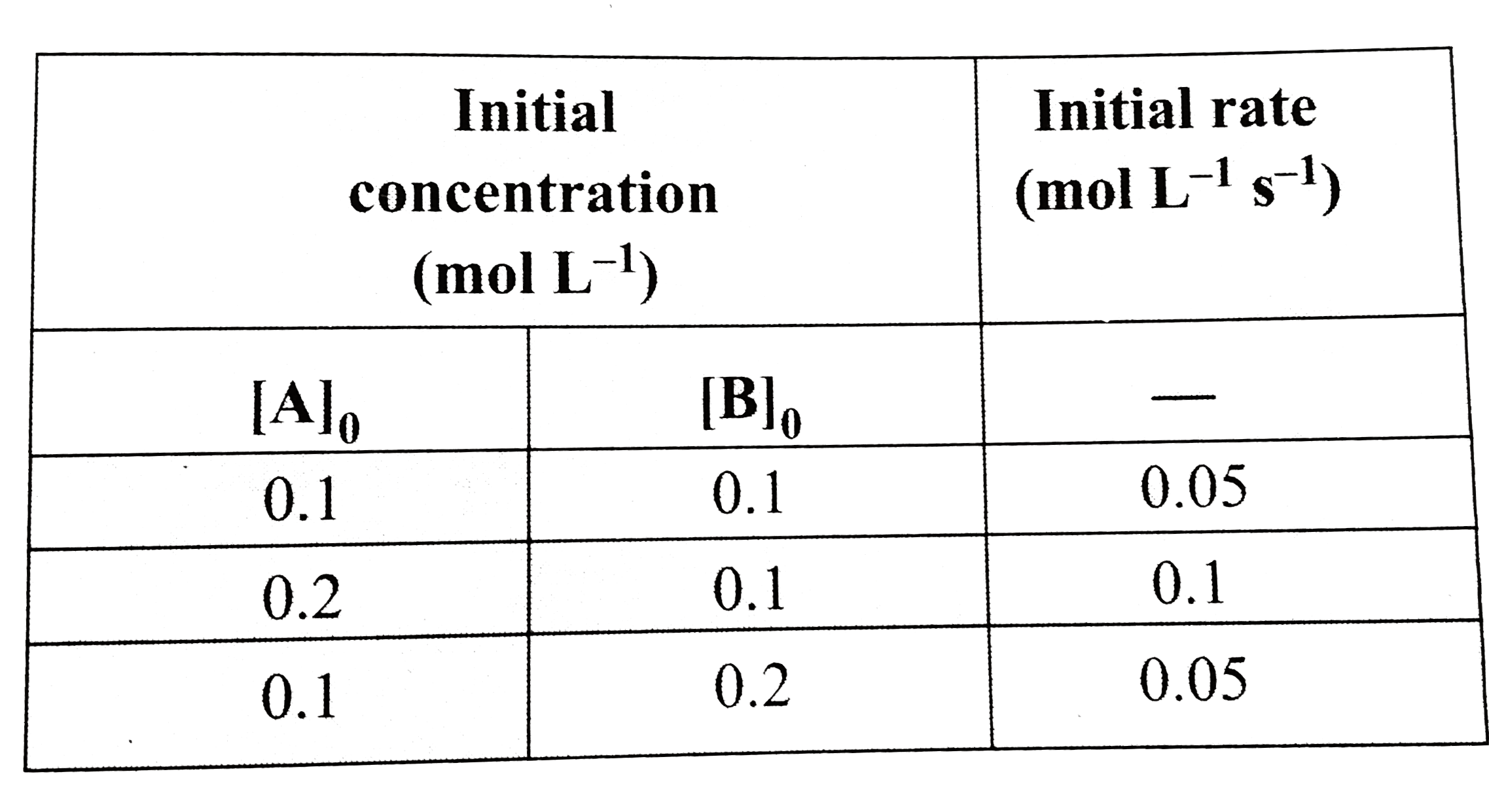For the second order reaction,
A+B→products
when a moles of A react with b moles of B, the rate equation is given by
k2t=1a−bInb(a−x)a(b−x)
when a>>b, the rate expression becomes that of
A
first order
B
zero order
C
unchanged, second order
D
third order
Video Solution
Text Solution
The correct Answer is:A
A+B→products
when a>>b i.e. reactant A is present in large excess, the rate of reactant will not depend upon its concentration.
Hence, it will be of first order.
|
Updated on:21/07/2023
Topper's Solved these Questions
- BOOK - MHTCET PREVIOUS YEAR PAPERS AND PRACTICE PAPERSCHAPTER - CHEMICAL KINETICS EXERCISE - MHT CET CORNER20videos
CHEMICAL KINETICS
- BOOK - MHTCET PREVIOUS YEAR PAPERS AND PRACTICE PAPERSCHAPTER - CHEMICAL KINETICS EXERCISE - Exercise 163videos
CHEMICAL KINETICS
- BOOK - MHTCET PREVIOUS YEAR PAPERS AND PRACTICE PAPERSCHAPTER - BIOMOLECULES EXERCISE - MHT CET CORNER24videos
BIOMOLECULES
- BOOK - MHTCET PREVIOUS YEAR PAPERS AND PRACTICE PAPERSCHAPTER - CHEMICAL THERMODYNAMICS AND ENERGETICEXERCISE - MHT CET Corner40videos
CHEMICAL THERMODYNAMICS AND ENERGETIC
Similar Questions
Knowledge Check
- Question 1 - Select One
For the second order reaction,
A+B→products
when a moles of A react with b moles of B, the rate equation is given by
k2t=1a−bInb(a−x)a(b−x)
when a>>b, the rate expression becomes that ofAFirst orderBSecond orderCUnchanged , second orderDThird order - Question 2 - Select One
The rate constant for a second order reaction is k=2.303t(a−b)logb(a−x)(b−x)
where a and b are initial concentrations of the two reactants A and B involved. If one of the reactants is present in excess, it becomes pseudo unimolecular. Explain how ?Afirst order w.r.t. ABzero order w.r.t. ACfirst order w.r.t.BDoverall zero order - Question 3 - Select One
For a reaction A+B→ products, when B is taken in excess, then the rate law expression can be written as
ARate =K[A]1[B]0BRate =K[A]1[B]2CRate =K[A][B]DRate =K[A]2[B]1
For the given reaction
A+B→ Products,
the following data are given.

(a) Write the rate equation.
(b) Calculate the rate constant.View SolutionFor a reaction, A+B→ Product, the rate law is given by r=k[A]12[B]2. What is the order of the reactio ?
View SolutionFor a reaction, A+B→ Products, the rate law is given by: r=k[A]1/2[B]2. What is the order of reaction:
View SolutionThe rate of reaction A+B+C→ Products is given Rate =K[A]12[B]13[C]. The order of the reaction is
View SolutionA second order reaction between A and B is elementary reaction:
A+B → Product
rate law expression of this reaction will be:View Solution


